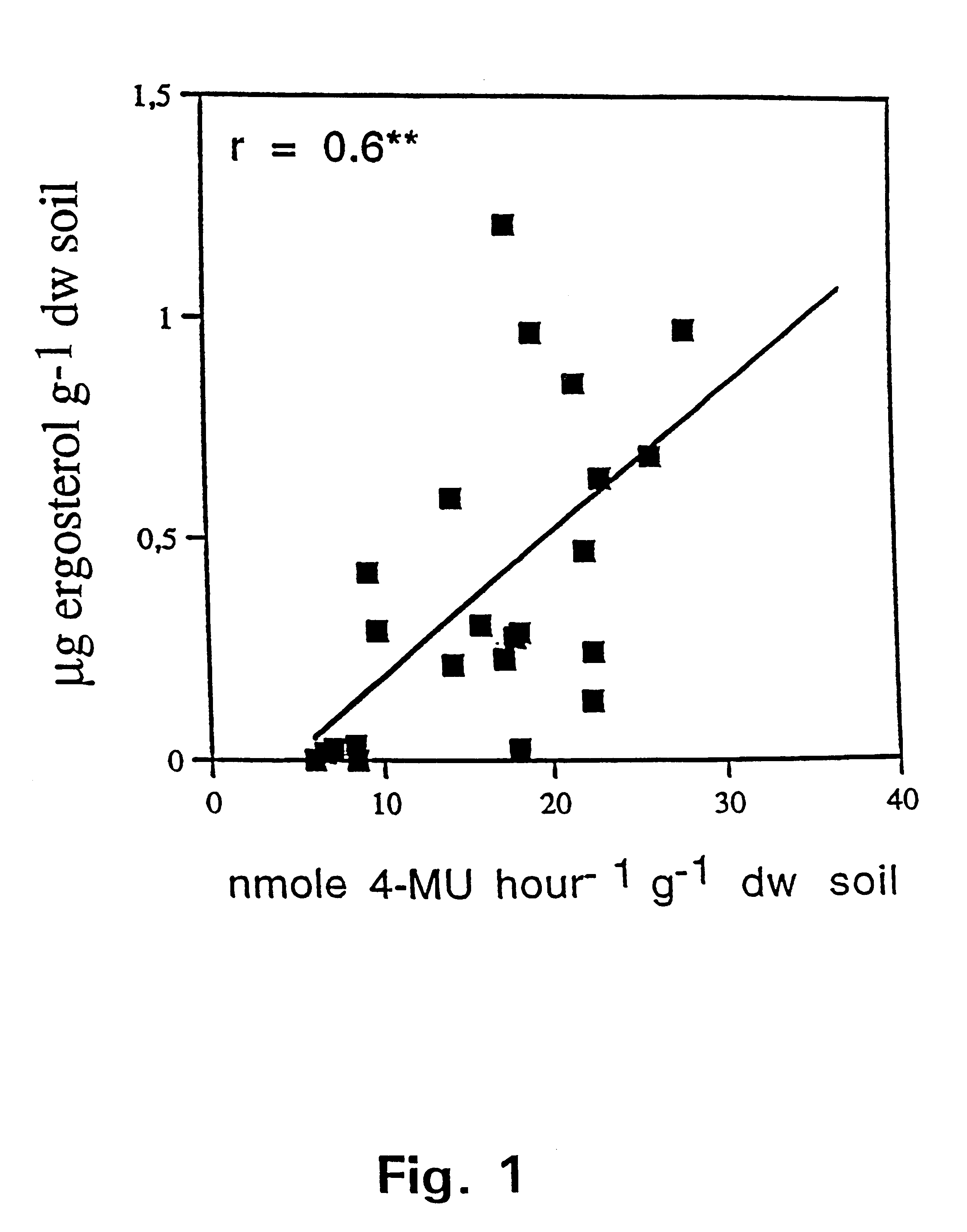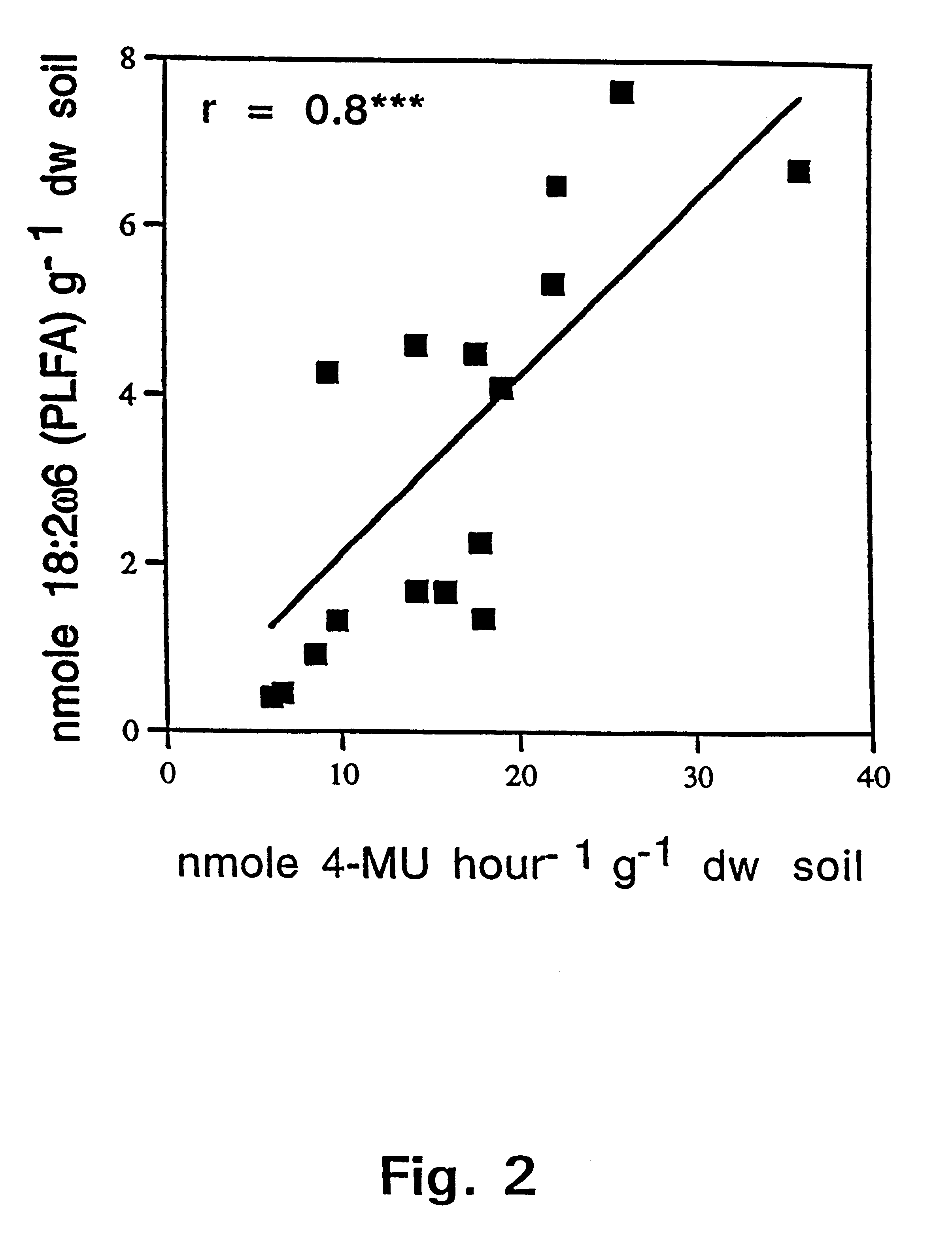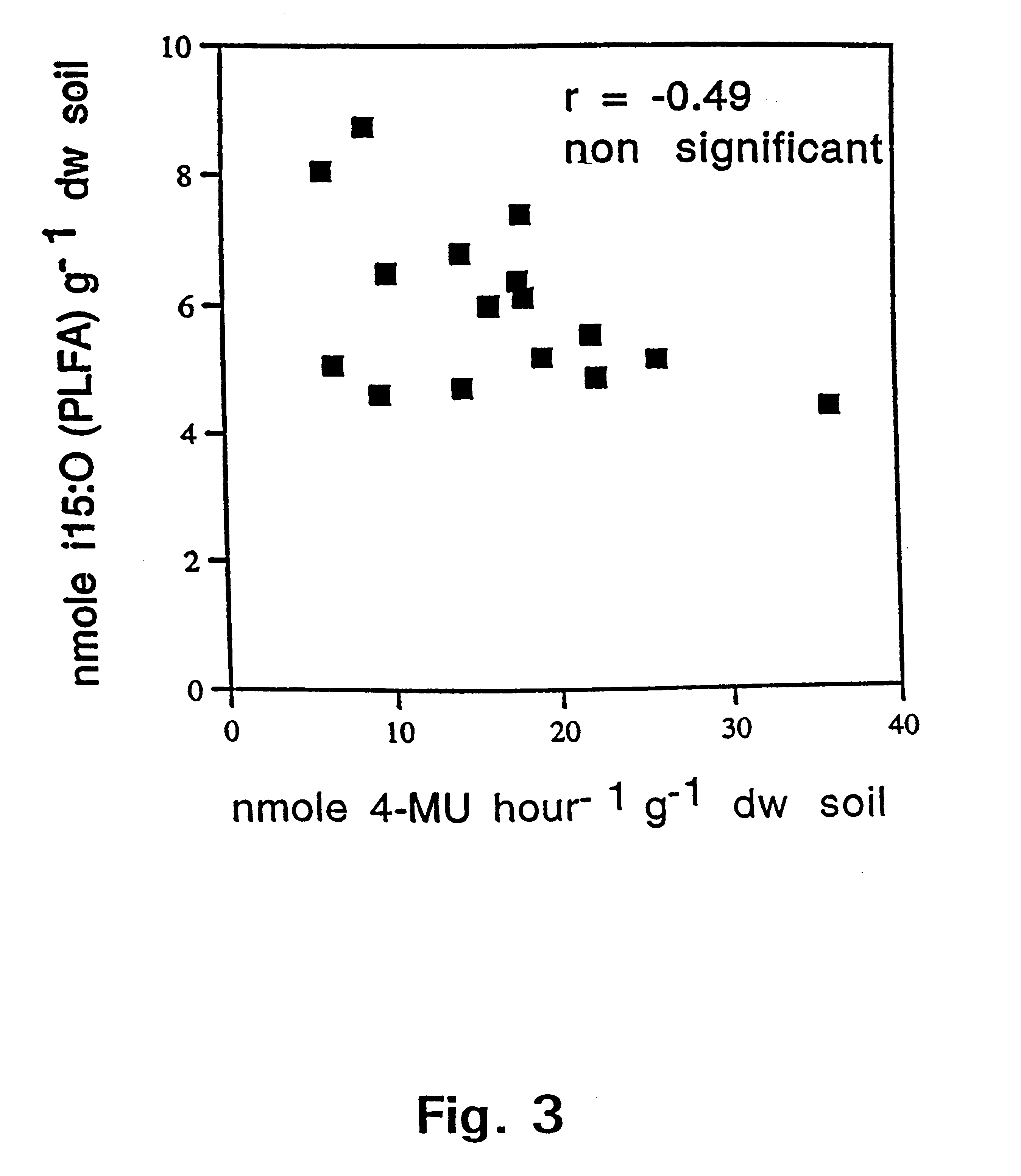Method of selectively determining a fungal biomass
a biomass and fungal technology, applied in the field of selectively determining a fungal biomass, can solve the problems of spoilage of foods and agricultural products, rot in building materials, time-consuming, laborious,
- Summary
- Abstract
- Description
- Claims
- Application Information
AI Technical Summary
Benefits of technology
Problems solved by technology
Method used
Image
Examples
example 1
Detection of .beta.-N-acetylhexosaminidase Activity and Other Enzyme Activities in Selected Fungal and Bacterial Species
A diverse selection of fungi was screened on a mineral medium and a vegetable juice medium for their ability to degrade 11 4-methylumbelliferone-labelled substrates (Tables 1.1 and 1.2). The screening showed that the ability to degrade 4-methylumbelliferyl-GLcNAc (substrate 3 and 4 in Tables 1.1 and 1.2) could be demonstrated in all fungi tested. The same widespread degradation potential against other model substrates could not be demonstrated. The fungi subjected to the assaying procedure were all obtained from the culture collection of the Department of General Microbiology at the University of Copenhagen, Denmark.
TABLE 1.2
In another experiment a diverse selection of fungi and bacteria were screened for their ability to degrade 4-methylumbelliferyl-GLcNAc when inoculated on soil extract agar (SEA) or a chitin-supplemented medium (chitin medium) (Tables 1.3 and 1....
example 2
Determination of Fungal Biomass in a Complex Environment
The present invention pertains in one aspect to a method of determining a fungal biomass present in a sample by detection of a fungal enzymatic activity present in the biomass. The detection of the fungal enzymatic activity involves contacting the sample with a substrate molecule comprising a detectable moiety released from said substrate in the presence of the fungal enzymatic activity. Demonstration of the highly significant, positive correlation between the detected fungal enzymatic activity-mediated 4-methylumbelliferone releasing cleavage of 4-methylumbelliferyl-N-acetyl-.beta.-D-glucosaminide (4-MU-GlcNAc), as measured in nanomoles of cleaved 4-MU-GlcNAc per hour per cm.sup.3 and estimates of the amount of the currently used state of the art fungal indicators ergosterol and PLFA, in selected soil samples, is presented in FIGS. 1 and 2, respectively.
The fact that this highly significant correlation was obtained in such a c...
example 3
Correlation of .beta.-N-acetylhexosaminidase with Fungal Biomass
Correlation between the detected substrate moiety and the amount of fungal biomass was demonstrated for cultures of Aureobasidium pullulans (FIG. 5) and Penicillium commune (FIG. 6) which were inoculated in a standard medium and grown under standard conditions. The biomass of each culture was measured in mg dry weight and correlated with the quantitatively detected 4-methylumbelliferone-mediated fluorescence measured (FU per minute). Samples for determination of biomass and detection of 4-methylumbelliferone were collected at the indicated time-points and assayed as described in Materials and Methods. The results demonstrate a direct, positive correlation of fungal biomass with detected fluorescence.
PUM
 Login to View More
Login to View More Abstract
Description
Claims
Application Information
 Login to View More
Login to View More - R&D
- Intellectual Property
- Life Sciences
- Materials
- Tech Scout
- Unparalleled Data Quality
- Higher Quality Content
- 60% Fewer Hallucinations
Browse by: Latest US Patents, China's latest patents, Technical Efficacy Thesaurus, Application Domain, Technology Topic, Popular Technical Reports.
© 2025 PatSnap. All rights reserved.Legal|Privacy policy|Modern Slavery Act Transparency Statement|Sitemap|About US| Contact US: help@patsnap.com



